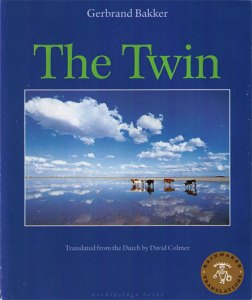
Two alternating narratives, one taking place in bohemian London, mainly set in Soho during the fifties and sixties, the other mostly in North London in the present day. Seemingly unconnected at first, the trajectories of the parallel stories will arrive at the same point.
Lexie and Innes are living in Soho, trying to get a fledgling magazine on its feet. They are captivating and compelling characters, as is the time in which they live. We watch them meet, court, work together, grow as individuals, and make what mark they can on London and on history. We get drawn into their lives, but then, just as we’re feeling pretty cozy with them, we switch to the story of…
…Elina and Ted in present day North London. Elina has recently given birth to Jonah, and evidently it was a horrific experience that she almost didn’t survive. I’m not sure what relevance that has to the story (something your book club can discuss!), but we spend quite some time worrying with Ted over Elina’s well-being and stability. We experience the daily reality of new motherhood with her, and see the impact the new baby is having on her and Ted’s relationship. It takes us awhile to realize that it is Ted we should be worrying about, not Elina. What is wrong with him? What are the flashes of memory he’s experiencing? What has he been through that we don’t know–that he doesn’t know?
Eventually the mystery starts to clear, and we can work out what the connection between the two narratives is. I don’t know if I was slow or spot on at this, but even when I was fairly certain I had it all worked out, I still wanted to read on, to find out the whys and the hows and the what nexts. And I think I just wanted more of the characters. I really liked them. In fact…
I quite enjoyed this book. Although let me say up front that the same things I liked about it also annoyed me a tiny bit.
The writing, for instance. Maggie O’Farrell is a terrific writer and some passages were fabulous, really fabulous; I especially liked when she would rewind a scene, taking the reader through it as though we were actually viewing it. I felt like I was watching a screen. She also built a good deal of suspense into the story, and I was sucked into reading late into the night, needing to know more.
But–paradoxically–I found the pace of the novel somewhat slow at times. I only say this because I can imagine some book group members getting frustrated, and, after giving it some thought, I feel any reader of The Hand That First Held Mine has to…just succumb to its timing and rhythms–they are part of the beauty of the book.
Another book group frustration I’m anticipating: the characters aren’t deep enough. Well, I loved these characters, every one. Did I want more of them? Yes. Could I have appreciated more depth? Yes. But these characters are so interesting, I think each one could stand his or her own novel. Again, this is something your book group can discuss.
All in all, this is a worthy novel (it did just win the Costa Award!), and one that I think is good for a book group discussion. If you want “Points to Ponder” for this novel, contact me!










